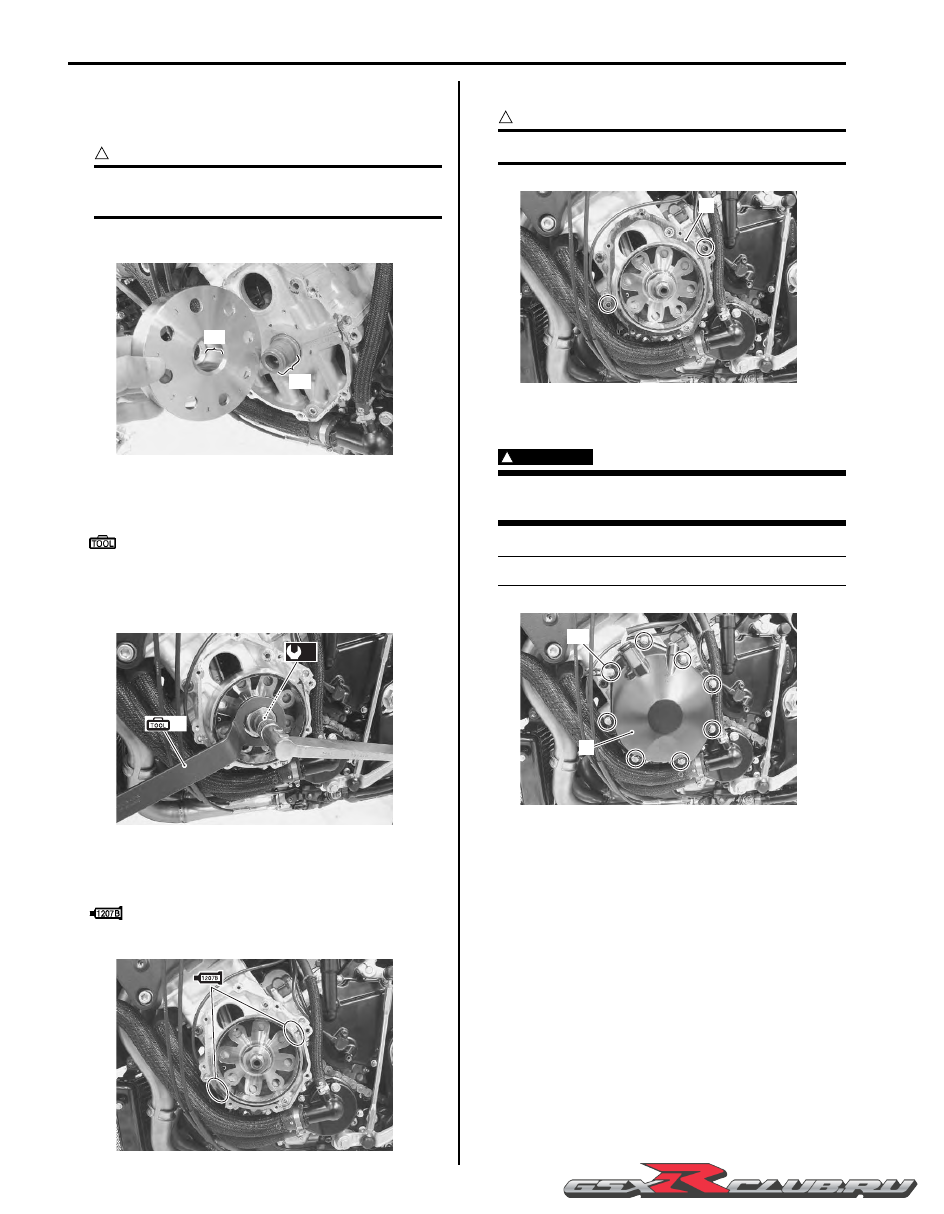Suzuki GSX-R1000. Service Manual - part 26

1J-6 Charging System:
• Degrease the tapered portion “A” of generator rotor
and also the crankshaft “B” with nonflammable
cleaning solvent.
CAUTION
!
Dry these parts naturally. Do not wipe them
with a cloth or use compressed air to dry.
• Install the generator rotor onto crankshaft.
• Hold the generator rotor with the special tool and
tighten its bolt to the specified torque.
Special tool
(A): 09930–44530 (Rotor holder)
Tightening torque
Generator rotor bolt (c): 145 N·m (14.5 kgf-m,
105.0 lbf-ft)
• Apply a bond lightly to the mating surfaces at the
parting line between the upper and lower crankcases
as shown.
: Sealant 99000–31140 (SUZUKI BOND
No.1207B or equivalent)
• Install the dowel pins and new gasket (2).
CAUTION
!
Use new gasket to prevent oil leakage.
• Install the generator cover (3) and tighten the
generator cover bolts.
WARNING
!
Be careful not to pinch the finger between the
generator cover and crankcase.
NOTE
Fit the clamp to the generator cover bolt “C”.
• Route the generator lead wire. Refer to “Wiring
Harness Routing Diagram” in Section 9A (Page 9A-7).
“A”
“B”
I947H11A0023-01
(A)
(c)
I947H11A0012-02
I947H11A0013-01
2
I947H11A0014-01
3
“C”
I947H11A0015-01